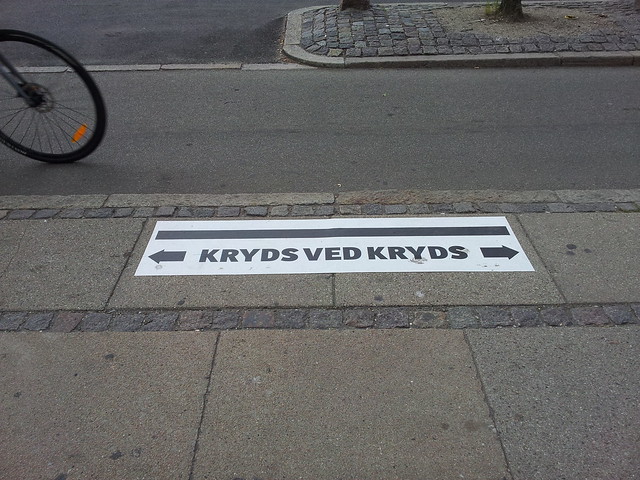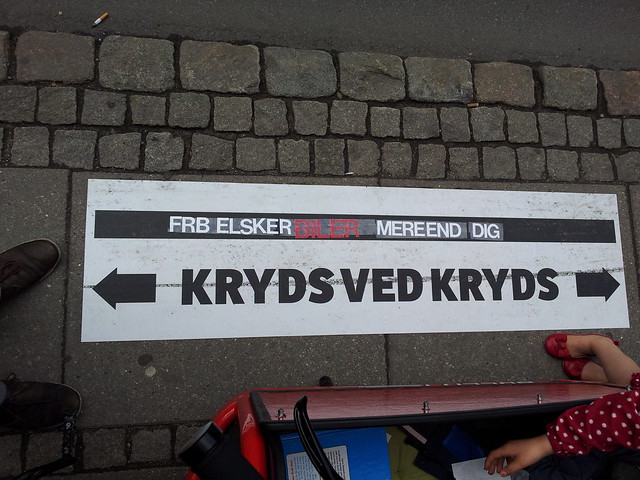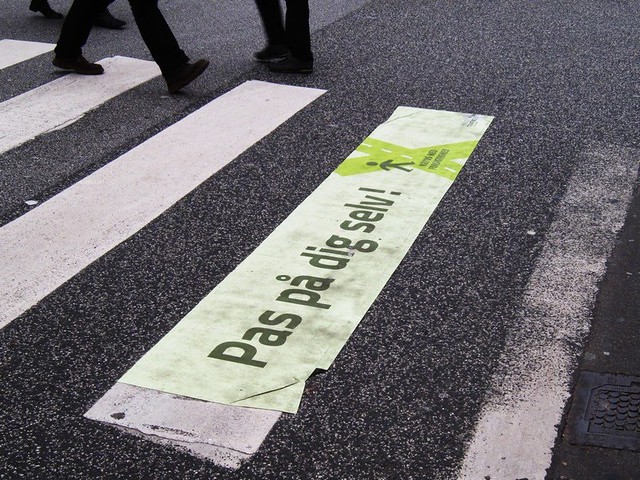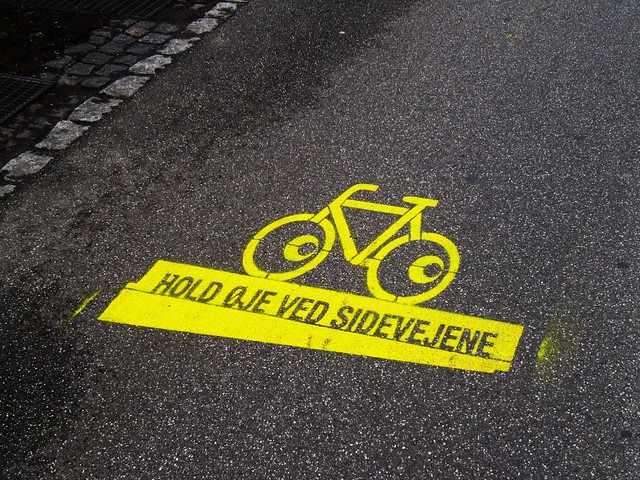
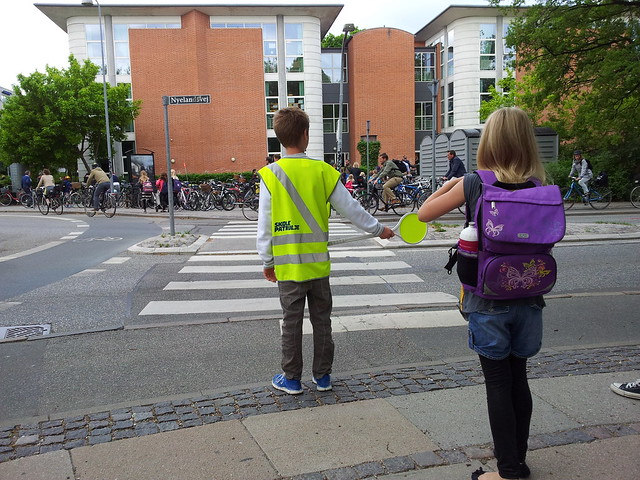
Cities use various methods in order to draw attention to themselves. Tourism campaigns, posters on busstops to advertise events or municipal services. City Branding is also a thing. Countries and organisations do the same. Usually the money is spent on highlighting positive angles. What often goes unnoticed is that cities have a tendency to spend taxpayer money on broadcasting the sad and undeniable fact that they are completely inept at keeping the streets safe. They try, unsuccessfully, to thinly disguise their incompetence as “safety” campaigns.
Consider the simple idea of school crossing guards. It's a concept well-known around the world. Hey, I used to be one back in the day (and I remembering hating having to do it). I was waiting at the crosswalk by Lulu and Felix's school in Frederiksberg yesterday morning. Waiting for the lovely kids to step out and block the cars and bicycles to allow us to cross.
Then I realised... the concept of school crossing guards are merely an advertisement for municipal ineptitude. The city is telling us in no uncertain terms that they have completely given up on making streets safer - and quite possibly they are unwilling to do so. They even enlist children to help get their message across. Let's face it, if a city had safe, human streets with intelligently low speed limits and a sincere will to prioritize pedestrians and cyclists then they wouldn't need school crossing guards. Here is a recent sign (April 2016) from Berlin. Big, expensive, taxpayer-funded sign boldly declaring that Berlin is unwilling to provide safe infrastructure for cyclists.The sign reads, "2015: 10 cyclists killed by passing cars. Minimum 1.5 meter distance".
Right there in lights. Berlin announcing that they don't really give a damn about cyclist safety.Unfortunately, many cities, as well as most traffic eningeers and even some planners still dictate the status quo of our car-centric streets. Even in Denmark. The police don't help much either.
To further my point, the City of Frederiksberg slapped these stickers all over the city recently. They read, "Cross at the Intersection". The helpful arrows direct you anywhere between 100-400 metres to the nearest intersection. They are placed in locations where people try to cross the street.
This city is the most densely populated city in Denmark. 90,000 people in the heart of Copenhagen. 65% of the households don't own cars. Most of the local mobility is done on bicycles, on foot or by public transport. Most of my daily errands involve going to local shops, schools, football facilities, etc. But never mind all that... the City still caters to the automotive minority as though it's 1963. This is another recent example from Frederiksberg.
With it's placement as a municipal island surrounded by Copenhagen, Frederiksberg is riddled with "parasites" - motorists who merely feed off the roads leading through the city without contributing anything to the life of the city or its neighbourhoods. The way the City allows the parasites to flow freely through its veins - despite an entire catalogue of ideas about how to stop or restrict them - is shockingly so last century.
Fortunately, the citizens are on to them. Someone added a text to one of the stickers, reading: "Frederiksberg loves cars more than you". It's not, however, like it's the first time. Here's a "keep the cars safe from squishy humans" campaign from a couple of years back. Stickers (badly stuck so pedestrians can trip on them for added drama) reading, "Watch out for yourself" or ""take care of yourself" were stuck onto pedestrian crossings.Given the population density and car volume in Frederiksberg, the entire city would be a 30 km/h zone - if it were placed in almost any other EU country. Just in: By September 2013, 37% of Paris streets will be 20 or 30 km/h zones.
The City has also previously allowed the greatest car sales organisation in Denmark - The Danish Road Safety Council - to place these stencils on cycle tracks in the city. They read "Watch the side streets" and we've written about this car-friendly campaign before. The cars coming off the side streets have to watch for traffic but the City boldly declared to all that they were unwilling to do anything about anything.
This is not the first city to spend money advertising their incompetence, nor do their ridiculous car-centric campaigns match the fantastically stupid Pedestrian Flag programs in the US, where certain cities declare their ineptitude to the world.
Of course, in New York it's bigger and better. The city there employs high-end marketing techniques to broadcast the message that they are helpless.
It's not all bicycle/pedestrian related either. An expensive campaign in the US focuses on the high death rate of young people in automobiles. No mention of removing traffic engineers from their posts and starting a class action lawsuit against them - no, no... just start a funky campaign - Alive at 25.
Sadly, Ignoring the Bull is still rampant.

